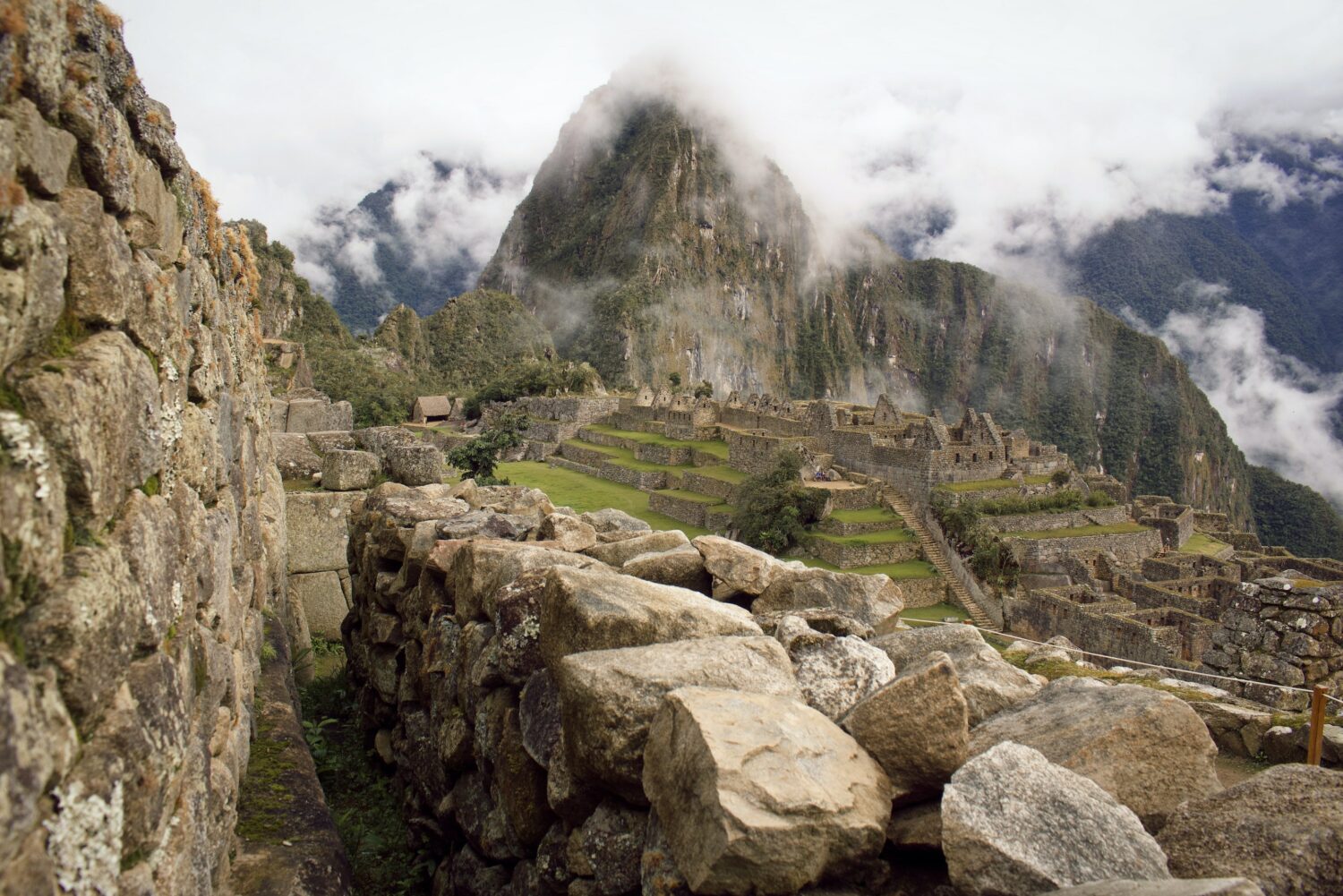Finally checking Machu Picchu off your bucket list in 2024? As of this January, Peru will increase the number of daily visitors from 3,800 to 4,500. Meaning, there’s more opportunity than ever to vist this astounding UNESCO World Heritage site.
And, this guide is the perfect place to begin your planning. It has all the info a first-timer needs to get started booking a tour, a trek, a hotel, or going on your own.
It may take some time to acclimate to the rules and timing considerations, but this awe inspiring wonder at the top of the world is worth every minute you spend finding out about it.
Every Trek to Machu Picchu in 2024
The Inca trail is just one of the ways you can hike into Machu Picchu. Developoed in the 1980s and 90s, it has a legend almost as large as the ruins it leads to. But the Inca had many routes to Machu Picchu, and in the past few years more options than ever before have become available.
But, you cannot just show up and hike the trail. A guide is needed to show you the way, and usually portesr are provided to assist with your gear. Most trails can be done at varying times, depending on the outfitter you are working with. Be sure to ask for all the options before making a decision.
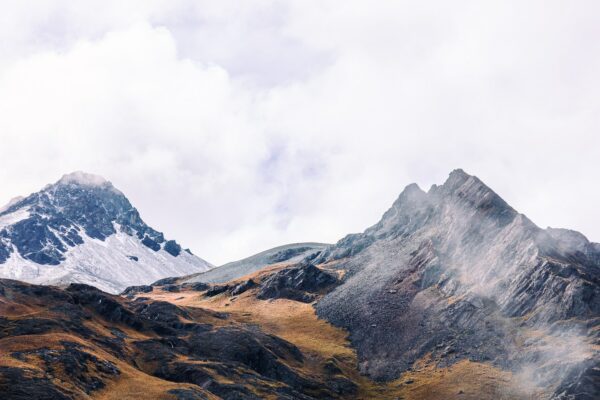
Inca Trail
A world-renowned trek through the Andes, offering 4-day and 2-day options and limited availability (500 permits per day). Challenging with steep climbs, it features stunning views and historical sites, including the Sun Gate. There’s a 16 person per group max. Costs range from $500-$1300. Book early as permits are limited and released each October.
Salkantay Trek
A 4-5 day trek with diverse landscapes, including Salkantay Mountain and cloud forests. It’s a more challenging alternative to the Inca Trail. Prices range between $500-$1000. Booking 3 months in advance is advised.
Vilcabamba Trek
Comparable in difficulty to the Inca Trail but less crowded. Takes 5-6 days through remote areas like Vilcabamba Valley. Costs about $500-$1200. Booking 3 months ahead is recommended.
Lares Trek
A 4-5 day culturally immersive journey, passing through Andean villages and hot springs. Prices vary from $500-$900. Booking 2 months in advance is suggested.
Choquequirao Trek
Ideal for experienced trekkers, this 4-9 day trek is both challenging and rewarding. Costs range from $600-$1200. Book a few months in advance.
Ancascocha Trek
Rated as one of the world’s top hikes by National Geographic, this Inca Trail alternative is perfect for those seeking a less crowded, nature-immersed experience. It spans hrough diverse landscapes and ancient ruins, culminating in a unique entry to Machu Picchu through the Sun Gate.
One of the shorter, least crowded trails to Machu Picchu, it’s a 3 day-er that starts in Cusco, goes through the Sacred Valley to Huchuy Qosqo, an impressive Inca military site reachable only on foot.
Inca Quarry Trail
Also known as the Cachicata Trail or Chaski Trail, this quieter path visits lesser-known Inca sites and the Cachicata quarry, where stones for Inca constructions were sourced.
Inca Jungle Trek
A 4-day moderate adventure, the Inca Jungle Trek is more than just a hike to Machu Picchu. It’s also involvies biking, rafting, and ziplining through the Andes’ cloud forests.
Tour Agencies
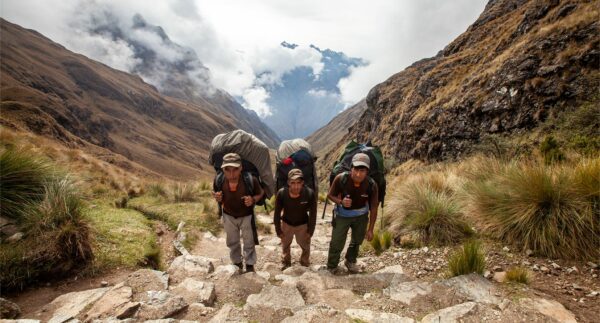
Even if hiking isn’t your thing, you still may need local help to shephard you through the complex transporptation and ticketing system (as you’ll see).
First, decide if you want a quick glimpse or a deep dive. Day trips whisk you in and out. Multi-day adventures let you see the less explored areas of the ruins, or could include other stops throughout the Sacred Valley and greater Peru. Then consider cost. Prices can vary greatly from day trips for a few hundred bucks to boutique experiences for tens of thousands of dollars.
Here are a few of my favorites:
Explorandes is one of the first tour agenceis to offer the Inca Trail trek, and today you can find quite a few unique treks to Machu Picchu as well as off-the-beathen-path hiking destinationis like Huayhuash and huraz.
Inca Expert balances luxury with a deep respect for local communities.They prioritize ethical travel practices, ensuring your luxury doesn’t come at the expense of local well-being.
Intrepid Travel specalizes in small group tours and balances comfort with adventure.
Luxury Resorts
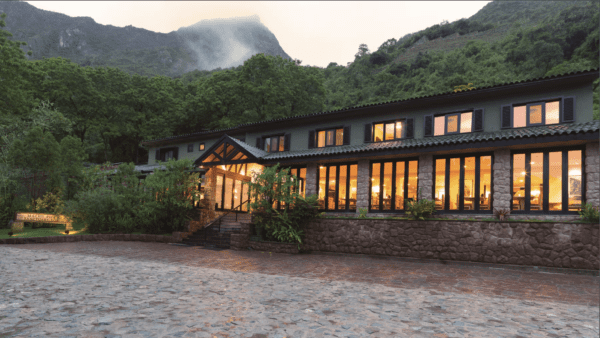
One of the most exclusive ways to visit Machu Pichu? Stay at one of the two lodges closest to the entrance: The Belmond Sanctuary Lodge and the Sumaq Machu Picchu Hotel.
The Sanctuary Lodge features 32 rooms, each showcasing a blend of contemporary art against the classic charm. The terrace offers breathtaking view. Here, you can be among the first to witness the sun grace Huayna Picchu, enjoying a refreshing smoothie as the historic citadel unveils in the morning light. Then, you’ll embark on an early guided tour of the ruins. This experience, limited to a maximum of four guests per group.
Positioned at the mountain’s base, the Sumaq Machu Picchu Hotel is a stone’s throw from where the bus departs for the park entrance. The hotel offers an array of experiences. One highlight is the guided journey with a shaman, connecting guests to Mother Earth and the sacred temples of the citadel. Sumaq also caters to families with a tailored 4-hour tour for both adults and children
Machu Picchu 2024: How to Go to on Your Own
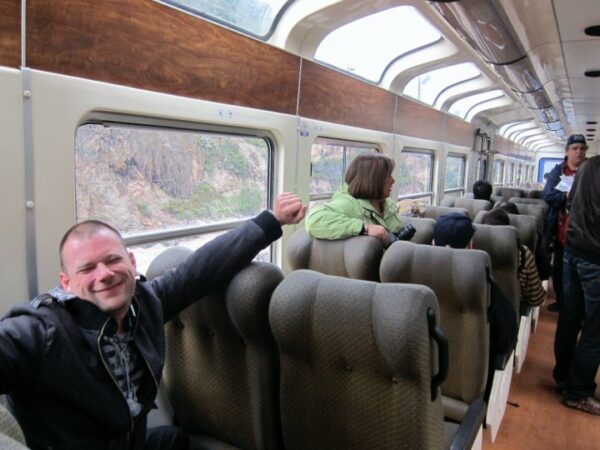
Machu Picchu is one of the most confusing places in the world to visit. But, with a little patience and some spanish, you can skip the tour agency all together.
Taking the train to Aguas Calientes isn’t difficult, but thanks to the booking system, it may still seem daunting to first timers. The confusion arises from the fact that there are two rail operators that use exactly the same tracks. And, both offer coach and luxury options.
Most people will take Peru Rail, which is the largest and leaves from Cusco, Puno, and Arequipa. The earliest trains depart in the 3am hour from San Pedro station closer to the city center, but the most popular trains leave a little later in the morning trains Poroy, about a $15 cab ride from most hotels in Cusco. The Vistadome gives you a glass top ceiling and cost about $100. Its high-end option –the Hiram Bingham train, includes gourmet menu, open bar, ticket to Machu Picchu, and private tour guide.
Inca Rail is newer and a touch more luxurious, but is ideal for people staying in the Sacred Valley, with trains departing from Ollantaytambo for about $68 round trip. They offer bus service from Cusco with a transfer, which could be worth it if you’re taking their premium trail. ‘The Private’ train, which can be chartered for 8 guests or more, includes champagne, gourmet menu, private bus to Machu Picchu, live music show, open bar as well as all the comforts on board.
Machu Picchu 2024 train schedules:
Purchasing Your Bus Ticket
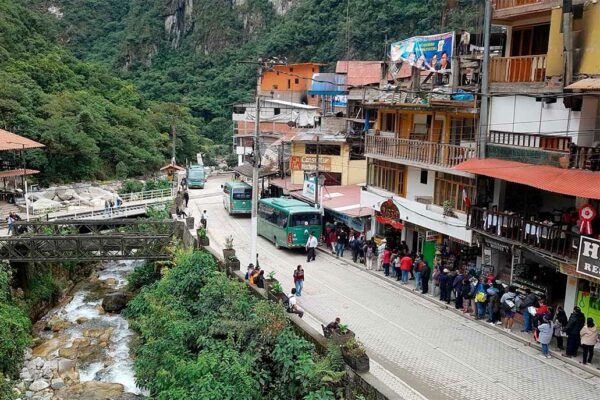
Once you get off the train, you can either hike the 2.2 miles up 1500 feet (it takes about 1:30-2 hours) or take the bus to the gate.
Most people will take the bus. Buses leave every 30 minutes, starting at 5:30 AM and continuing until 3:30 PM. The trip takes about 25–30 minutes. It’s always a good idea to book in advance, but once you have a ticket, it’s first come, first serve. If you can’t buy your bus ticket to Machu Picchu online, you have in-person options in both Cusco and Aguas Calientes. Tickets cost $12 each way, $24 round trip with discounts for students, seniors, people with disabilities, and locals.
Cusco
Av. Infancia 433 – Wanchaq
Av. El Sol 380 – Banco Interbank
Aguas Calientes
The bus station, Avenida Hermanos Ayar in Aguas Calientes
On the Day of Your Departure
With your bus ticket and passport in hand, make your way to the bus stop located at the lower part of Aguas Calientes, near the bridge. Try to be 15 minutes early.
The Bus Stop
If you’re arriving in Aguas Calientes by train, the journey to the bus stop is straightforward. Simply follow the signage from the train station; the walk should take around 10 minutes. However, plan for 15 or 20, because you may be distracted by the town’s charm.
Returning to Aguas Calientes
Buses leave every half hour from outside the front gate until about 5:30pm.
Where to stay in Aguas Calientes
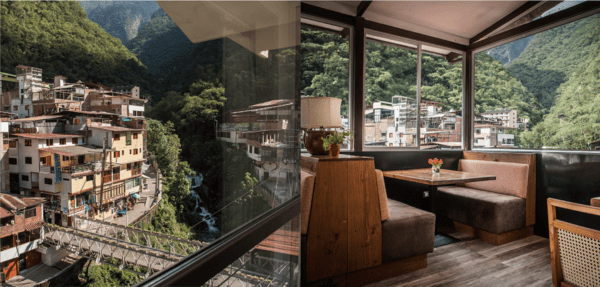
Aguas Calientes is a charming, ramshackle village wedged between jungle mountains and the Urubamba River. Its adorable cafes, endless market, and buzzy streets nestled beneath the ruins are ready to whisk you away.
But in reality, you won’t spend too much time in Aguas. So, don’t overthink your accomidations here unles you are looking for a luxury hotel. Most hotels and hostels serve breakfast and are well aquainted with the early hours associated with visisting Machu Picchu.
Here are a few that stand out.
Jaya Suite Machupicchu is known for its cozy and welcoming vibe, perfect for couples. It stands out for its friendly staff and rooms with lovely river and mountain views.
Inti Punku MachuPicchu Hotel & Suites is a few steps from the train and every room provides beautiful mountain views.
Tierra Viva Machu Picchu is set at the far end of town, facing the Urubamba River and surrounded by nature. But most importrantly, it is only a few steps from the bus or hiking trail up to Machu Picchy. It features spacious rooms, a lounge with a fireplace, a breakfast room, and a bar.
Machu Picchu 2024: How to buy your entrance tickets
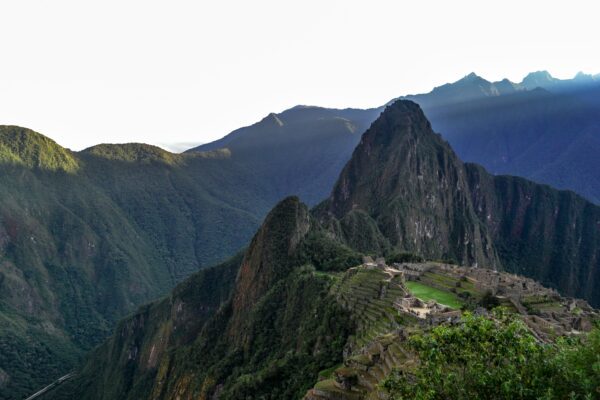
If you skip a tour package and plan the trip on your own, bring some patience when it comes to buying your pass to Machu Picchu. There are a lot of decisions to make and timing is everything.
You can book months in advance online through the notoriously inconsistent government website (There are others, but they are more expensive re-sellers), but you also have to give yourself time to understand the options.
Register for an account on the official website to access the ticket booking system. Provide personal details, including your full name, passport number, nationality, and email address. Select ticket type, circuit, date, and time. Then you’ll pay. Finally, you will receive a ticket confirmation email containing your booking details and QR code. Print your ticket confirmation or save it on your mobile device for presentation at the Machu Picchu entrance gate, along with your passport.
You can buy Machu Picchu tickets in person. Bring cash (credit cards are only accepted in Cusco) and your passport.
Machu Picchu Ticket Office in Cusco
Located at Avenida Infancia 406, Cusco, Peru, the Machu Picchu Ticket Office is open from Monday to Friday from 7:00 AM to 5:00 PM.
Machu Picchu Ticket Office in Aguas Calientes
In Aguas Calientes, tickets can be bought at the Ministry of Culture located in Av. Pachacutec (just off the main square) from about 5:00 AM to 10:00 PM
Tickets are all non-refundable. So be careful when booking. If your plans change, you will have to re-book the ticket entirely with no refund.
Machu Picchu 2024 Circuits
Gone are the days of simply buying an entrance and arriving early to get access to the best hikes. In 2024, you have to select by circuit, a pre-determined entry time and arrive within your given hour (which includes lining up for the bus to get to the gate on time–more on that later), and no option covers everything. There are only 200 openings per time slot, which tend to sell out early on. I recommend waking up early to be among the first in the park when it opens at 6am (which you can only do if you’re doing one of three sanctioned hikes). Not only do you get to see it at its most peaceful, but you get the sunrise.
Circuits 1+2
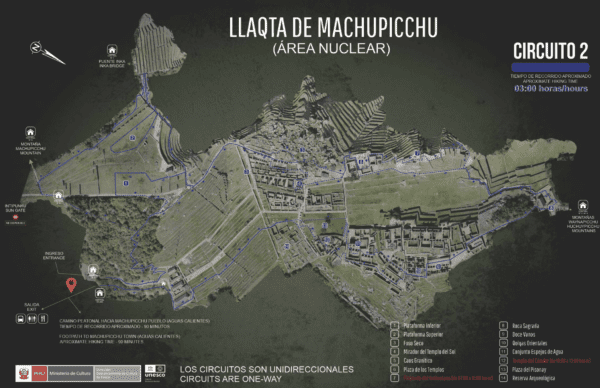
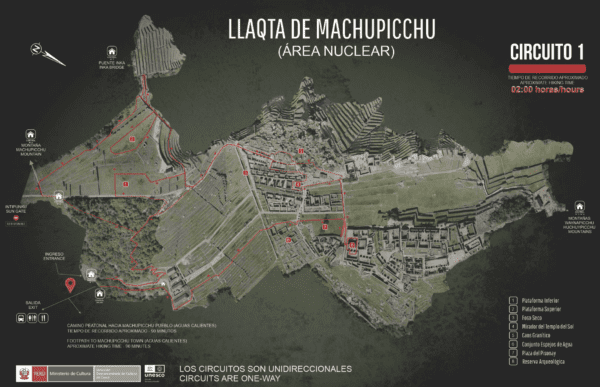
In short, circuit 2 is the most popular and includes the iconic shot, the sacred rock, access to the best views, and gives you the full perimeter of the ruins (both the upper and lower levels). It takes between 3–4 hours.
Circuit 1 similar, but doesn’t cover the lower levels, and can be completed in about 2 hours. Both hikes include the off shoot trail to the Sun Gate, which is where trekkers on the Inca Trail enter the park.
You can also easily add on a quiet side hike to the Inca Bridge, a bridge set against a sheer cliff, thought to be the escape route.
Circuits 3+4
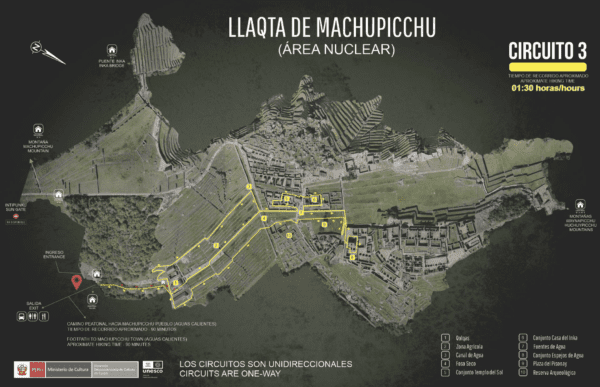
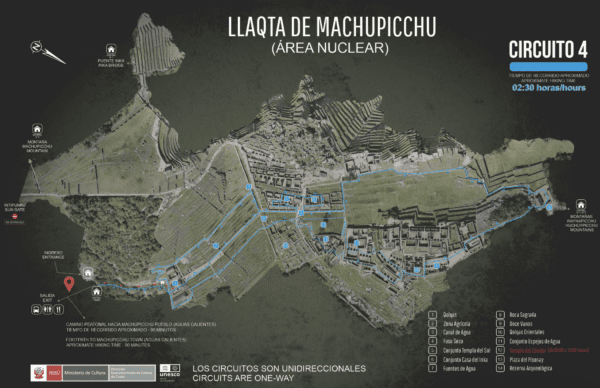
These circuits take you closer to the actual ruins and mail temples within the site – Temple of the Condor, the Sacred Rock, Water Mirrors, Temple of the Three Windows, and the Temple of the Sun. But they’re also the starting off points for the Park’s three main hikes.
Mount Machu Picchu offers the highest vantage point for miles. It’s steep and is the hardest hike in the park, taking 2-3 hours to summit. Departure is at either 7am or 8am and only 50 tickets are sold per entry.
Huayna Picchu mountain is the peak in the iconic postcard shot, known for its steep and guardrail-free “stairs of death” — not for the faint of heart.
Huchuy Picchu mountain, is a newly opened and shorter viewpoint just below, which gives you similar vistas with less near death experiences.
As mentioned earlier, the only way to see the sun rise over Machu Picchu without arriving via trek is to sign up for one of these hikes. For both, only 75 tickets are sold. There are 4 starting times between 7am and 10am.
There is a final, 5th circuit, but it is only open to hikers who did the Inca Trail.
Do you need a guide to see Machu Picchu in 2024?
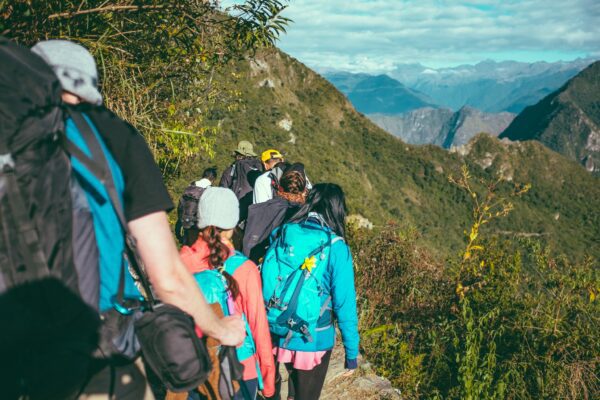
For climbing Huayna Picchu or Machu Picchu Mountain, a guide booked in advance is mandatory, as is the case for treks like the Salkantay Trek and the Inca Trail.
However, for the main site of Machu Picchu, a guide isn’t compulsory but is recommended. Guides offer insights into the site’s 15th-century Inca origins, explaining its history, culture, and spiritual significance. They also assist in navigating the sprawling ruins and choosing the best route among the four available within the Citadel.
Keep a few things in mind when planning the day in Machu Picchu:
- Walking in the park is one way, meaning you cannot double back if you miss something.
- It’s easy to make a wrong turn and cut your circuit short, so pay attention to the signs.
- Once you leave the park, you can not come back in.
- The only bathrooms are outside the main entrance to the park and cost 2 soles.
- You can purchase more than one circuit, but you will have to re-enter the park. Present both tickets the first time you enter.
- There is an hour time limit, but it is not enforced
- Temples close down every day for maintenance, and no circuit covers them all.
- Bring your passport because it’s attached to your ticket.
- Bring snacks. There’s food at the entrance, but it can be an ordeal.
Machu Picchu 2024: Best times to visit
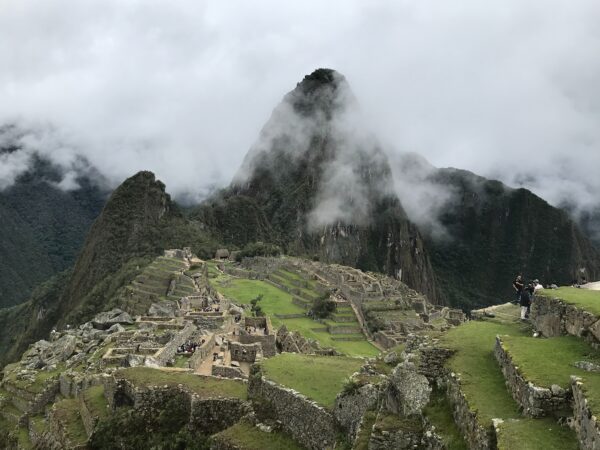
In my opinion, there is no best time of year to go. Dry weather and clear skies meansn easy photos but also crowds. Rain makes it muddy and hard to traverse, but makes it feel as if you are in a cloud and adds drama to your pics. Choose a month that fits your goals, needs, and comfort level.
Here’s a month-by-month break down.
January
It’s rainy season, with frequent and heavy showers but fewer crowds. The site might be shrouded in mist, but the rain brings out the lush greenery. Trails can be slippery, and some parts may be temporarily inaccessible due to rain.
February
It’s super risky. Heavy downpours are common as this is the wettest month.The Inca Trail is closed for maintenance, but Machu Picchu remains open unless it has experienced heavy flooding. Visibility is reduced, but the landscape is vibrantly green.
March
The weather begins to clear up, but showers are still frequent. The site is lush, and water levels in rivers are high. Crowds begin to tick up, but not at peak season levels. Inca Trail reopens late in the month. Paths may be muddy.
April
Rainfall decreases significantly and visibility is good with landscapes still green. Crowds thicken but have yet to reach peak levels. This is an Ideal for trekking as trails are less muddy.
May
Finally, it’s the dry season, with clear, sunny days and excellent visibility. Showers are still possible, but are shorter and more infrequent. All trails and routes are open, but it is the beginning of the tourist season.
June
With dry, sunny days, and little to no rain, on paper it’s a great time to visit. But, it’s the busiest month due to the Inti Raymi festival (Festival of the Sun) and summer vacations. All routes and trails are open, but advance booking is recommended due to high demand.
July
Similar to June with dry and sunny days, but it continues to be a peak month for visitors.
August
It’s the end of dry season, but occasional showers can occur. Crowds begin to thin out slightly.
September
This is a transitional period with increased cloud cover and occasional showers. It’s less crowded than peak season months and all are trails open.
October
Rainfall increases, but there are still plenty of clear breaks. Greenery starts to bloom again, and the site is less crowded. Some rainy days may hinder trekking.
November
With frequent showers and moody, misty conditions its harder to find a break in the clouds, but the mist makes it feel otherworldly. You may find trails wet due to rain, but crowds have thinned considerably.
December
Similar weather to November–some rain, but generally accessible. The site is lush and not as crowded.
More Travelbinger stories:
Should you book Virgin Voyages if you’re over 40?
Celebrity Cruises just debuted a $900 million ship
This couple in their 20s quit their job to travel the world on a sailboat
Travelbinger is proud to be a publisher with Google News and Apple News.
Some of the links in this post are affiliate links. If you click on the link and purchase the item, I will receive an affiliate commission. Please do! I’m a one-man team for this website, so any help is sincerely appreciated.
Travelbinger is now on YouTube! Subscribe here for exclusive travel tips and advice from founder Jimmy Im. Follow us on Twitter, Facebook and Instagram.

